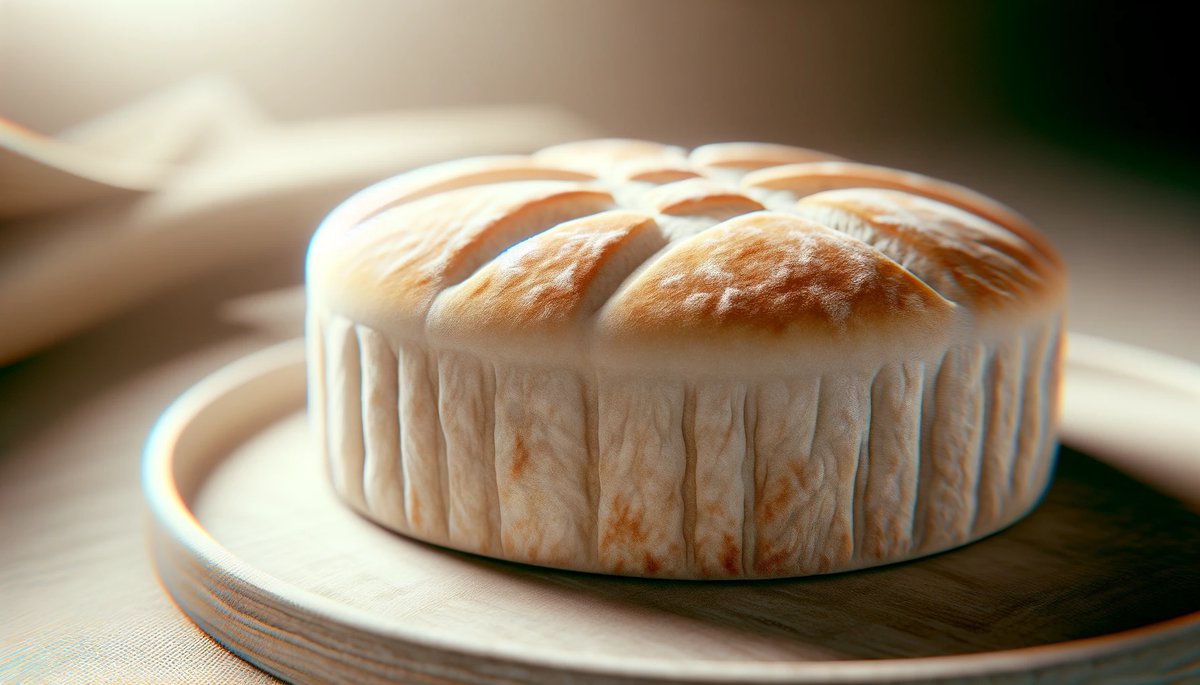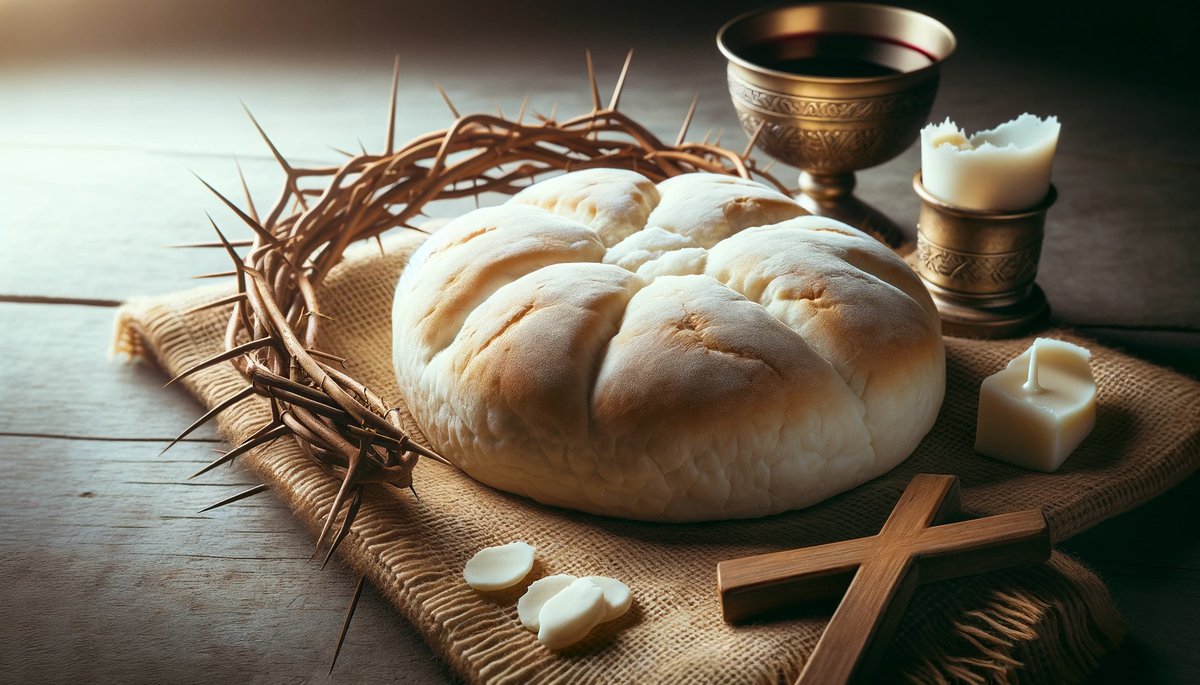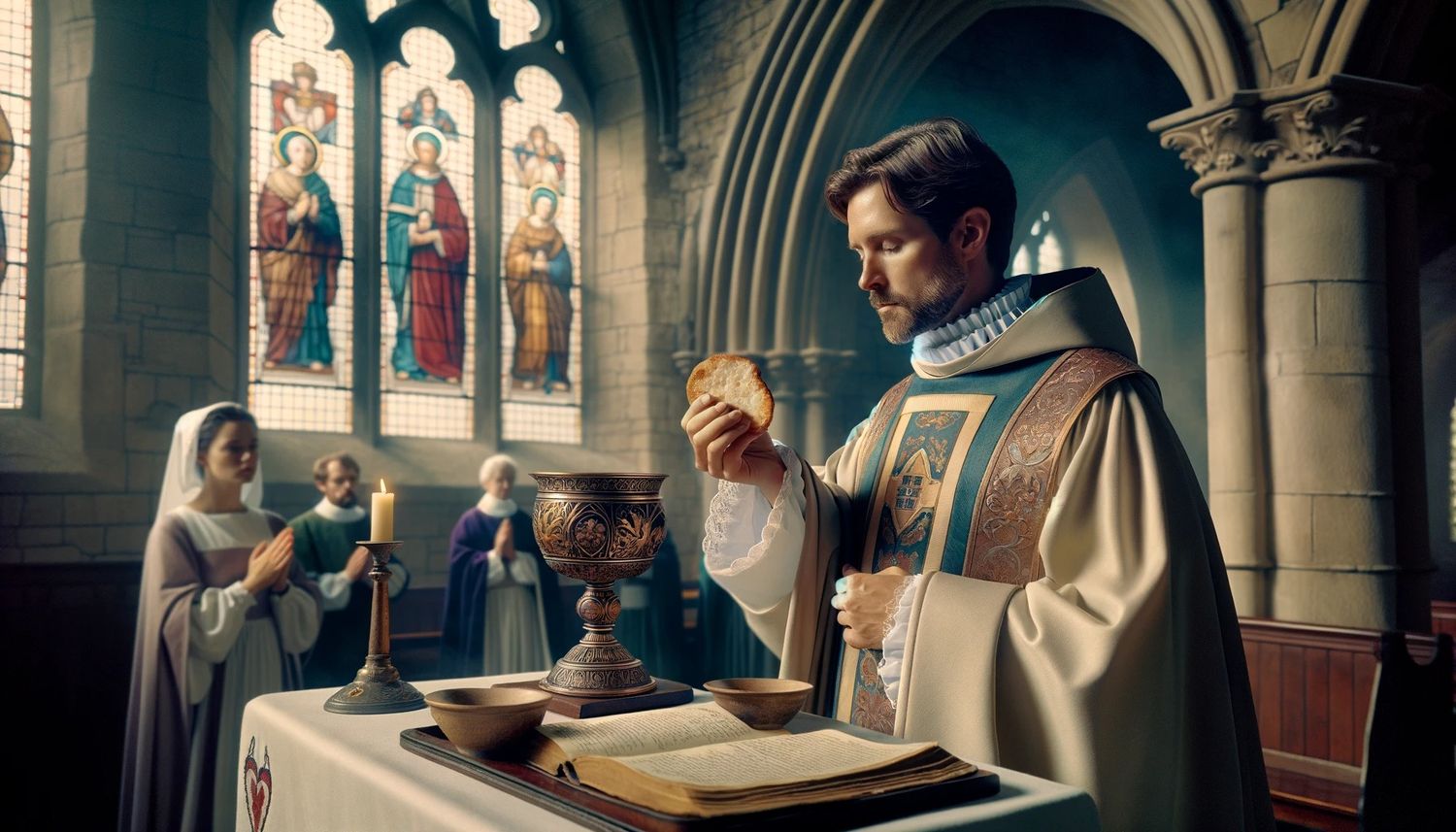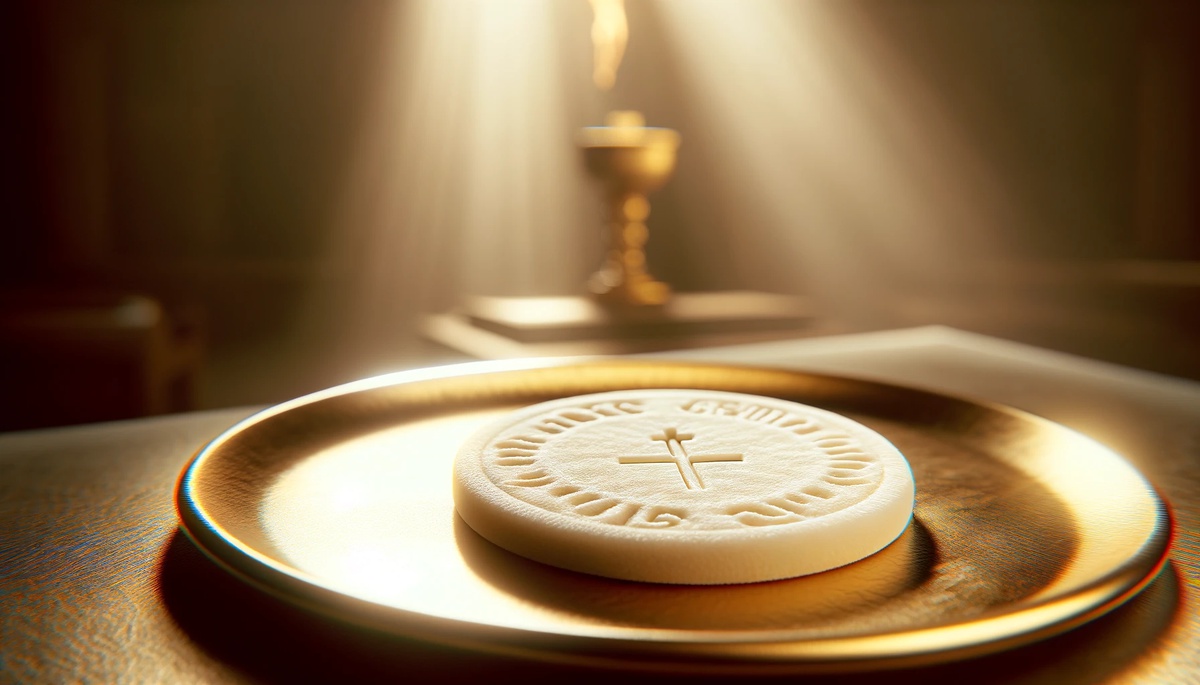Home>Theology and Spirituality>What Bread Is Used For Communion


Theology and Spirituality
What Bread Is Used For Communion
Published: February 24, 2024
Jason DeRose, Managing Editor at Christian.net, uses his expertise in religion and journalism to deepen understanding of faith's societal impacts. His editorial leadership, coupled with a strong academic background, enriches the platform’s diverse content, earning him recognition in both journalism and religious circles.
Discover the significance of the bread used for communion in theology and spirituality. Learn about the traditions and symbolism behind this sacred practice.
(Many of the links in this article redirect to a specific reviewed product. Your purchase of these products through affiliate links helps to generate commission for Christian.net, at no extra cost. Learn more)
Table of Contents
Introduction
Communion, also known as the Eucharist or the Lord's Supper, holds profound significance in Christian faith and practice. At the heart of this sacred ritual is the sharing of bread and wine, symbolizing the body and blood of Jesus Christ. The choice of bread used in communion is a topic of both historical and theological importance, reflecting the diverse traditions and beliefs within Christianity.
The communion service, rooted in the Last Supper, is a central element of Christian worship across denominations. It serves as a commemoration of Jesus' sacrificial death and a celebration of the new covenant between God and humanity. As such, the bread used in communion holds deep spiritual and symbolic meaning for believers.
Throughout history, various types of bread have been utilized in communion ceremonies, each carrying its own cultural and religious significance. From unleavened wafers to leavened loaves, the diversity of communion bread mirrors the rich tapestry of Christian traditions and practices.
Understanding the history, types, and significance of communion bread provides insight into the multifaceted nature of this sacred rite. It invites us to explore the theological nuances and cultural expressions that have shaped the practice of communion throughout the centuries. In the following sections, we will delve into the historical roots of communion, examine the different types of bread used in this sacred ritual, and contemplate the profound symbolism attached to communion bread in Christian theology and spirituality.
Read more: What Is Communion Bread Called
The History of Communion Bread
The history of communion bread is intertwined with the origins of the Christian faith and the development of its sacred rituals. The practice of sharing bread as a symbol of unity and remembrance has ancient roots, predating the establishment of formalized communion ceremonies. The earliest Christian communities, inspired by the teachings of Jesus and the traditions of Judaism, gathered to break bread together in commemoration of Christ's Last Supper.
In the New Testament, the apostle Paul provides one of the earliest written records of the communion ritual in his first letter to the Corinthians, dated to the first century. He recounts the events of the Last Supper, where Jesus shared bread and wine with his disciples, instructing them to partake in remembrance of him. This foundational account established the precedent for the communion meal, emphasizing the central role of bread as a symbol of Christ's body.
As Christianity spread and evolved, diverse cultural and theological influences shaped the practice of communion and the bread used within it. The early church fathers, such as Ignatius of Antioch and Justin Martyr, offered insights into the significance of the Eucharist and the role of bread in the communion service. Their writings reflected a growing theological understanding of the spiritual implications of partaking in the body of Christ through the consumption of bread.
The form of communion bread also underwent changes over the centuries. Initially, common leavened bread was used in communion, reflecting the everyday sustenance of the people. However, as the theological emphasis on purity and symbolism intensified, unleavened bread became the preferred choice in many Christian traditions. This shift was influenced by the symbolism of purity and the unleavened bread used during the Jewish Passover, which was seen as a foreshadowing of Christ's sacrificial death.
The history of communion bread is marked by a dynamic interplay of cultural, theological, and practical considerations. The evolution of the communion ritual and the bread used within it reflects the diverse expressions of Christian faith and the enduring significance of the Last Supper in shaping Christian worship practices.
Throughout history, the practice of communion has been a unifying force within the Christian community, transcending denominational differences and cultural boundaries. The history of communion bread stands as a testament to the enduring power of this sacred ritual and its ability to connect believers across time and space.
Types of Bread Used for Communion
The types of bread used in communion ceremonies vary across Christian traditions, reflecting diverse theological perspectives, cultural practices, and historical influences. Each type of communion bread carries its own symbolic and practical significance, contributing to the rich tapestry of the communion ritual.
-
Unleavened Wafers:
Unleavened wafers, also known as hosts, are perhaps the most widely recognized form of communion bread. These thin, round discs, often made from wheat flour and water, hold deep historical roots in Christian liturgical practice. The use of unleavened bread harkens back to the Jewish Passover tradition, where unleavened bread symbolized the haste with which the Israelites departed from Egypt. In the context of communion, unleavened wafers represent the sinless body of Christ, emphasizing purity and the absence of leaven, which is often associated with corruption and impurity. -
Leavened Bread:
In some Christian traditions, leavened bread is used in communion, departing from the more common practice of unleavened wafers. This choice reflects a theological emphasis on the celebration of Christ's resurrection and the abundance of God's grace. The use of leavened bread underscores the joy and richness of the Christian faith, symbolizing the transformative power of Christ's redemptive work and the overflowing grace bestowed upon believers. -
Intinction Bread:
Intinction, the practice of dipping the bread into the wine before consumption, often requires a specific type of bread that can withstand the dipping process without crumbling. In such cases, thicker, denser bread varieties are utilized to ensure structural integrity during the intinction. This type of communion bread serves a practical purpose while also carrying symbolic significance, emphasizing the union of Christ's body and blood in the act of communion. -
Gluten-Free Options:
With an increasing awareness of dietary restrictions and sensitivities, many churches now offer gluten-free communion bread to accommodate individuals with gluten intolerance or celiac disease. These specially crafted bread alternatives ensure that all members of the congregation can participate fully in the communion service, reflecting an inclusive and compassionate approach to worship.
The diverse array of communion bread types reflects the multifaceted nature of Christian worship and the theological nuances embedded within the ritual. Each type of bread carries its own theological symbolism, catering to the diverse spiritual needs and convictions of the global Christian community. As such, the choice of communion bread serves as a tangible expression of the rich diversity and unity found within the body of Christ.
The Significance of Communion Bread
The communion bread holds profound significance within Christian theology and spirituality, serving as a focal point of contemplation and reverence during the sacred ritual of communion. Its significance extends beyond mere sustenance, encompassing rich symbolism and theological depth that resonate deeply with believers across denominations.
At the core of the communion bread's significance lies its representation of the body of Christ. As Jesus broke bread and shared it with his disciples during the Last Supper, he imbued this act with profound meaning, instructing his followers to partake in remembrance of him. The communion bread thus becomes a tangible symbol of Christ's sacrificial offering, embodying the essence of his selfless love and redemptive mission. Through the act of consuming the bread, believers enter into a profound spiritual communion with Christ, embracing his presence and the transformative power of his sacrifice.
Furthermore, the choice of unleavened bread in many communion traditions underscores the purity and sinlessness of Christ. By using unleavened bread, the emphasis is placed on the immaculate nature of Christ's body, free from the corruption and impurity symbolized by leaven. This symbolism reinforces the theological understanding of Christ as the spotless Lamb of God, whose sacrifice atones for the sins of humanity. The act of partaking in the unleavened bread thus becomes a solemn acknowledgment of Christ's purity and the redemptive grace extended to believers through his sacrifice.
In contrast, the use of leavened bread in certain Christian traditions reflects a celebration of Christ's resurrection and the abundance of God's grace. The leavened bread symbolizes the joy and richness of the Christian faith, emphasizing the transformative power of Christ's redemptive work and the overflowing grace bestowed upon believers. This nuanced symbolism invites believers to contemplate the dynamic aspects of their faith, encompassing both the solemnity of Christ's sacrifice and the exuberant hope found in his resurrection.
Moreover, the act of sharing and consuming the communion bread fosters a sense of unity and community among believers. As individuals partake in the bread, they are reminded of their interconnectedness within the body of Christ, transcending cultural, social, and denominational boundaries. The communion bread becomes a unifying element, drawing believers together in a shared experience of remembrance, gratitude, and spiritual nourishment.
Ultimately, the significance of communion bread lies in its ability to encapsulate the central tenets of the Christian faith – the sacrificial love of Christ, the redemptive power of his sacrifice, and the unity of believers in the body of Christ. It serves as a tangible expression of the profound spiritual realities that define Christian identity and community, inviting believers to partake in a sacred encounter with the living Christ through the simple yet profound act of consuming the bread.
The communion bread, in all its theological and symbolic richness, stands as a poignant reminder of Christ's abiding presence and the enduring grace that sustains and unites the global Christian community.
Conclusion
In conclusion, the significance of communion bread transcends mere religious symbolism, encompassing profound theological truths and spiritual nourishment for believers. The historical evolution of communion bread, from its early roots in the Last Supper to its diverse forms in contemporary Christian worship, reflects the enduring relevance of this sacred ritual in shaping Christian identity and community.
The rich tapestry of communion bread types, including unleavened wafers, leavened bread, intinction bread, and gluten-free options, underscores the diverse theological perspectives and cultural expressions within the global Christian landscape. Each type of bread carries its own theological symbolism, catering to the spiritual needs and convictions of believers while fostering a sense of unity within the body of Christ.
Furthermore, the communion bread serves as a tangible reminder of Christ's sacrificial love, the redemptive power of his sacrifice, and the unity of believers in the body of Christ. Whether through the symbolism of purity in unleavened bread or the celebration of Christ's resurrection in leavened bread, the act of partaking in communion bread invites believers to engage with the core tenets of their faith in a deeply personal and communal manner.
The act of sharing and consuming the communion bread fosters a sense of unity and community among believers, transcending cultural, social, and denominational boundaries. It serves as a unifying element, drawing believers together in a shared experience of remembrance, gratitude, and spiritual nourishment.
Ultimately, the communion bread stands as a poignant reminder of Christ's abiding presence and the enduring grace that sustains and unites the global Christian community. It invites believers to partake in a sacred encounter with the living Christ through the simple yet profound act of consuming the bread, fostering a deeper connection to the foundational truths of the Christian faith.
In essence, the communion bread, with its theological and symbolic richness, continues to play a central role in Christian worship, serving as a tangible expression of the profound spiritual realities that define Christian identity and community. Its enduring significance underscores the timeless relevance of the communion ritual and its ability to unite believers across diverse traditions in a shared expression of faith, remembrance, and spiritual communion.















